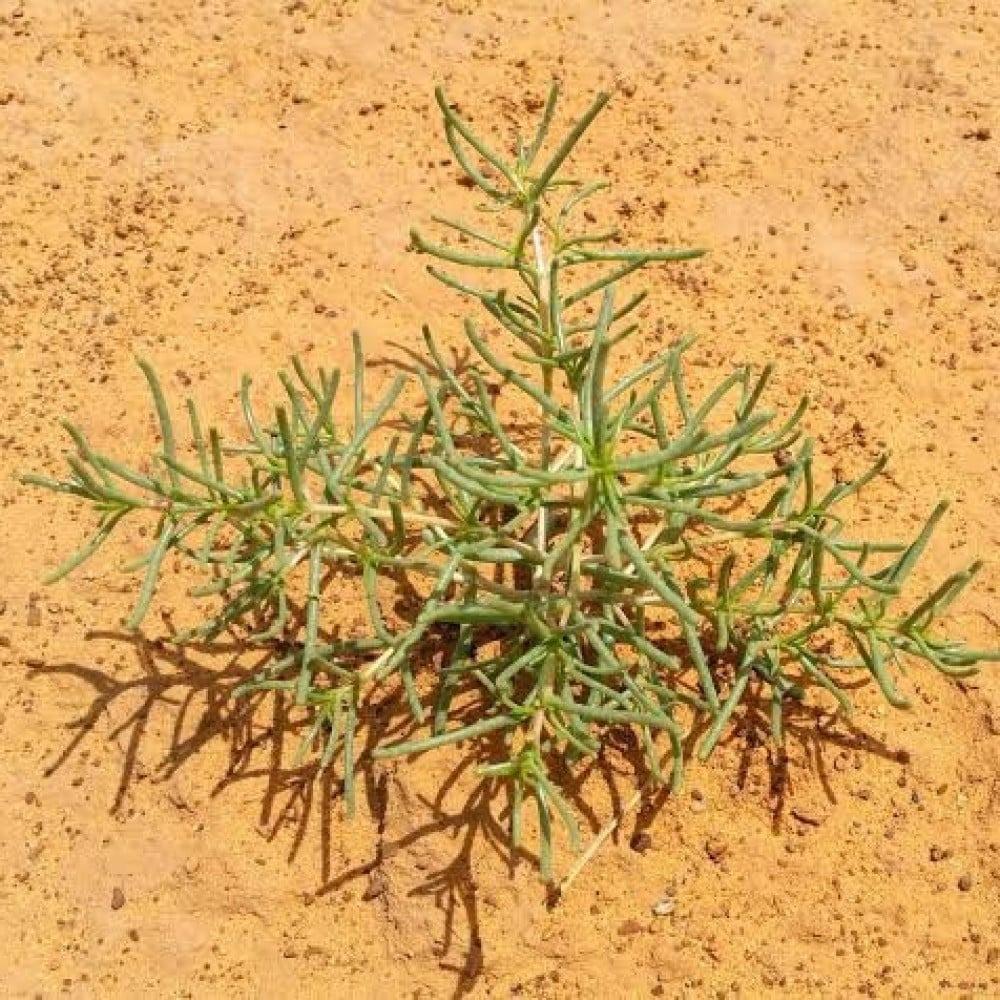Common Name: Shnan
Scientific Name: Anabasis
Also Known As: Tartir, Ajram
Description:
The Shnan plant is characterized by its dense branches and succulent stems. It is a toxic plant, and consumption can lead to accelerated heart rate, dizziness, visual disturbances, and increased saliva production.
Uses and Benefits:
The fruits of the Shnan plant, as well as the plant itself, have various uses. Methyl anabasine acts as a respiratory stimulant, while anabasine sulfate is used as an insecticide. Additionally, it serves as a raw material for producing vitamin PP. The Bedouins use the Shnan plant in washing clothes due to its high content of sodium carbonate and potash.
Native Habitat:
The Shnan plant is commonly found in Saudi Arabia and the Gulf countries, as well as in various regions of the Syrian Desert.
Flower:
The flowers of the Shnan plant are pink in color.
Climate and Soil Conditions for Cultivation:
The optimal temperature range for Shnan growth is between 15 and 18°C. It can grow in various types of soil, particularly in clay or loamy soils, and it can tolerate high levels of salinity.
Planting Method and Time:
Shnan can be propagated by seeds, which are sown in March and April after the risk of spring frost has passed. Approximately 5-10 kg of seeds are required per hectare, which should be sown after preparing the soil surface and just before rainfall.

